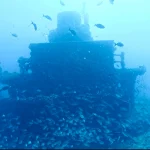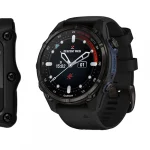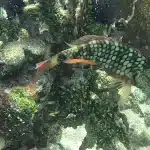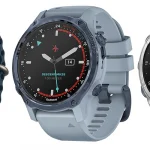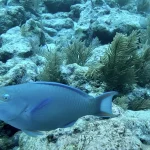Table of Contents
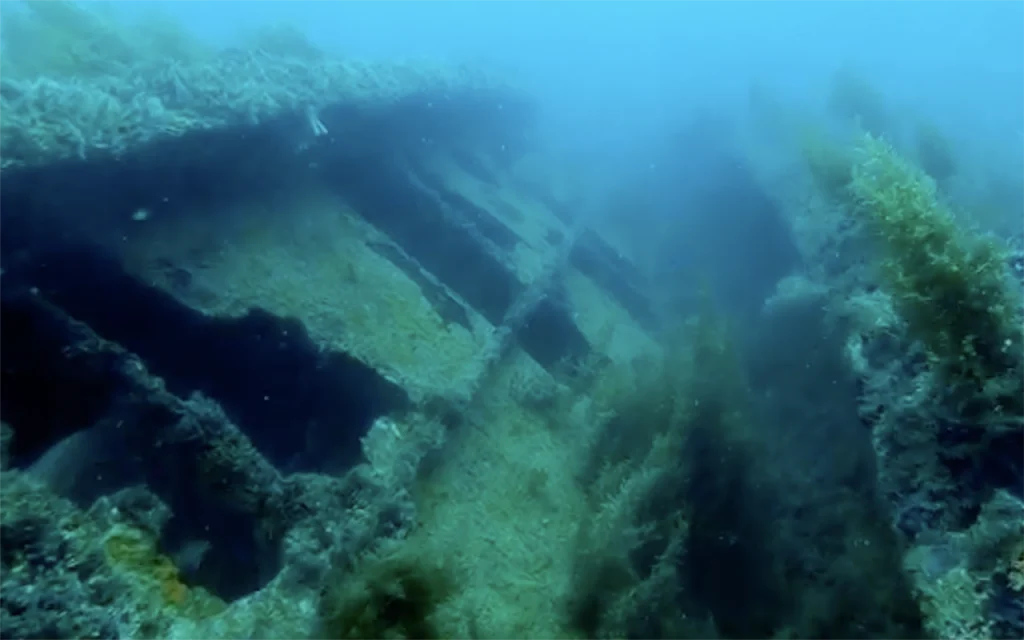
Divers report that there is “tons of life on this Panama City Beach shipwreck”, indicating a rich and diverse ecosystem has developed around the USS Accokeek since its sinking in 2000. The variety of habitats created by the ship’s structure, including its portholes and swim-through areas, likely support different types of marine life, making it an interesting site for underwater observation and photography.
Article at a Glance
- Location and Coordinates: The USS Accokeek wreck is situated off the coast of Panama City Beach, Florida, at coordinates 29° 58.475′ N, 085° 51.915′ W, resting at a depth of 100 feet (30.5 meters).
- Historical Significance: Commissioned in 1944, the USS Accokeek served as a fleet tug during World War II, participating in key operations and earning one battle star before being decommissioned in 1972.
- Unique Dive Features: Divers can explore the intact structure of the wreck, including swim-through areas and portholes, while encountering diverse marine life, including a resident goliath grouper.
- Safety Measures: Advanced certification is typically required for diving the wreck, with standard safety practices such as buddy systems, dive planning, and the recommendation of nitrox for extended bottom time.
- Diving Conditions: The wreck is suitable for advanced divers due to its depth and potential currents. Guided dives are often recommended for safety and to enhance the diving experience.
- Diving Shops: Several dive shops in Panama City Beach offer trips to the USS Accokeek, including Panama City Diving, Diver’s Den, and Panama City Dive Center, providing guided tours and equipment rental.
- Artificial Reef Impact: Since its sinking in 2000, the USS Accokeek has become a thriving artificial reef, supporting a rich ecosystem and contributing to marine conservation efforts in the region.
Shipwreck Location Coordinates and Depth
Depth
The wreck rests at a depth of 100 feet (30.5 meters).
Location Coordinates
29° 58.475′ N, 085° 51.915′ W
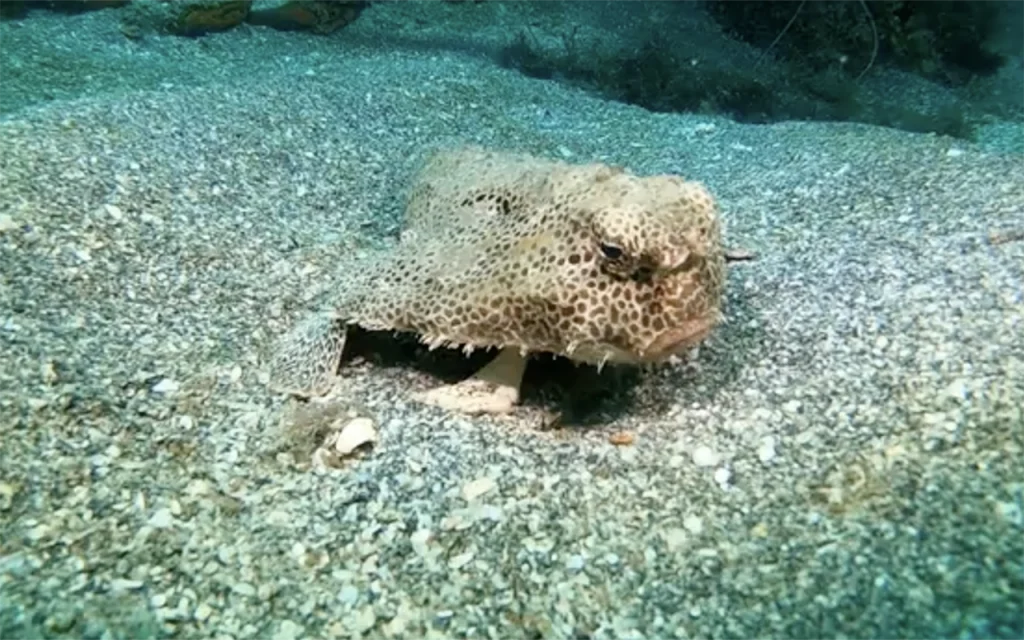
What Do Scuba Divers Say About This Ship
- Swim-throughs: The wreck offers divers the opportunity to explore its interior, with a couple of swim-through areas available.
- Portholes: Divers mention that there are cool portholes to look into, providing glimpses of the ship’s interior.
- Marine life: The wreck has become home to abundant marine life. One notable resident is a goliath grouper, which is often seen by divers.
- Vertical profile: The ship has a 25-foot vertical profile, which is particularly attractive to spearfishers as it tends to hold amberjack.
- Depth range: The wreck sits at depths ranging from 74 feet at the bow to 100 feet at the sand, making it suitable for advanced divers.
- Nitrox recommendation: Due to the depth, some divers recommend using nitrox to extend bottom time.
- Photography opportunities: The USS Accokeek is considered a great site for underwater photography, offering both macro and wide-angle shots.
- Training potential: The wreck serves as an excellent site for wreck diving training and practice.
- Artificial reef success: Divers note that the Accokeek has successfully transformed into a thriving artificial reef, supporting a diverse ecosystem.
What Kind of Marine Life Can Be Found on The Ship
- Goliath Grouper: One of the most notable residents of the wreck is a goliath grouper, which is frequently seen by divers.
- Amberjack: The wreck’s 25-foot vertical profile tends to attract amberjack, making it a popular spot for spearfishing.
- Various reef fish: As an artificial reef, the Accokeek likely hosts a variety of smaller reef fish species common to the Gulf of Mexico.
- Encrusting organisms: Over time, the ship’s surface has likely been colonized by various encrusting organisms such as barnacles, sponges, and corals, which are typical for artificial reefs in this region.
- Pelagic visitors: Given its location in open water, the wreck may also attract passing pelagic species.
Key Information
| Aspect | Details |
|---|---|
| Wreck Name | USS Accokeek |
| Type | Fleet Tug (ATA-181) |
| Location | Panama City Beach, Florida |
| Coordinates | 29° 58.475′ N, 085° 51.915′ W |
| Depth | 100 feet (30.5 meters) |
| Length | 143 feet |
| Beam | 33 feet |
| Year Built | 1944 |
| Year Sunk | July 9, 2000 |
| Purpose of Sinking | Artificial reef |
| Dive Difficulty | Advanced |
| Notable Features | Intact structure, swim-throughs, portholes |
| Marine Life | Resident goliath grouper, various reef fish |
| Historical Significance | Served in World War II, earned one battle star |
| Part of | Florida Panhandle Shipwreck Trail |
| Dive Activities | Wreck exploration, underwater photography, spearfishing |
| Best Diving Conditions | Summer months (June to August) |
| Recommended Equipment | Nitrox for extended bottom time |
What Makes USS Accokeek a Unique Diving Experience
- Historical significance: Built in 1944, the Accokeek served for 26 years as a fleet tug, participating in significant operations like the invasion of Okinawa and transiting the Panama Canal. This rich history adds depth to the diving experience.
- Varied depth profile: The wreck sits at depths ranging from 74 feet at the bow to 100 feet at the sand, providing divers with different levels of challenge and exploration opportunities.
- Intact structure: The Accokeek offers divers the chance to explore a relatively intact shipwreck, with features like portholes and swim-through areas that allow for an immersive experience.
- Artificial reef ecosystem: Since its sinking in 2000, the Accokeek has transformed into a thriving artificial reef, supporting a diverse array of marine life, including a resident goliath grouper.
- Technical diving opportunities: The depth and structure of the wreck make it suitable for advanced divers and those interested in technical diving, including the use of nitrox to extend bottom time.
- Spearfishing potential: The wreck’s 25-foot vertical profile tends to attract amberjack, making it a popular spot for spearfishing enthusiasts.
- Photography subject: The combination of historical structure and marine life makes the Accokeek an excellent subject for underwater photography, offering both macro and wide-angle shot opportunities.
- Part of a larger trail: As a component of the Florida Panhandle Shipwreck Trail, the Accokeek is part of a broader diving experience in the region, allowing divers to explore multiple wrecks with varied histories and ecosystems.
How Does The USS Accokeek Compare to Other Shipwrecks in Florida
USS Accokeek
- Type: Fleet tug (ATA 181)
- Built: 1944
- Sunk: 2000 as an artificial reef
- Depth: 100 feet
- Length: 143 feet
- Features: Intact structure with swim-throughs, cool portholes, resident goliath grouper, and a thriving artificial reef ecosystem.
USS Oriskany
- Type: Aircraft carrier
- Built: 1945
- Sunk: 2006 as an artificial reef
- Depth: 80 to 212 feet
- Length: 888 feet
- Features: Known as the “Great Carrier Reef,” it is the largest artificial reef in the world, offering extensive exploration opportunities for advanced divers.
USS Strength
- Type: Minesweeper
- Built: 1943
- Sunk: 1987 as an artificial reef
- Depth: 80 to 100 feet
- Length: 184 feet
- Features: Less intact than other wrecks, but offers a rich history and diverse marine life.
Black Bart
- Type: Offshore oilfield supply vessel
- Built: 1976
- Sunk: 1993 as an artificial reef
- Depth: 80 feet
- Length: 185 feet
- Features: The wheelhouse was removed by Hurricane Michael, but the cargo hold offers swim-through opportunities.
Vamar
- Type: Patrol gunboat
- Built: Early 20th century
- Sunk: 1942 under mysterious conditions
- Depth: 25 feet
- Length: Various scattered pieces
- Features: Shallow dive with historical significance, scattered wreckage.
Empire Mica
- Type: British tanker
- Built: Early 20th century
- Sunk: 1942 by a German U-boat
- Depth: 25 to 105 feet
- Length: 479 feet
- Features: Upright structure, historical significance, deteriorated over time.
Comparison Highlights
- Depth and Accessibility: The USS Accokeek, like the USS Strength and Black Bart, lies at a depth suitable for advanced divers, while the USS Oriskany caters to both recreational and technical divers due to its varying depth.
- Marine Life: The Accokeek is noted for its resident goliath grouper and diverse marine life, similar to the USS Strength and Black Bart.
- Historical Interest: While the Accokeek has a rich service history, wrecks like the USS Oriskany and Empire Mica offer significant historical narratives tied to major wartime events.
- Structural Integrity: The Accokeek is relatively intact, offering swim-throughs, which is a feature it shares with the USS Chippewa and Black Bart, but not with the more deteriorated USS Strength and Empire Mica.
What is The Full History of This Ship
- Construction and Commissioning:
- Laid down on June 15, 1944, in Orange, Texas by Levingston Shipbuilding
- Launched on July 27, 1944
- Commissioned on October 7, 1944, as USS ATA-181
- World War II Service (1944-1946):
- Transited the Panama Canal in January 1945
- Arrived at Guam on March 25, 1945
- Participated in the Okinawa campaign, towing damaged warships to safety
- Earned one battle star for World War II service
- Post-War Pacific Service:
- Provided towing and salvage support for American occupation forces
- Survived a severe typhoon at Okinawa on October 15, 1945, despite running aground
- Atlantic Fleet Service (1946-1972):
- Arrived in Philadelphia on November 20, 1946
- Renamed USS Accokeek on July 16, 1948
- Operated primarily along the eastern seaboard and in the West Indies
- Missions included operations in Labrador, Ascension Island, and Lake Michigan
- Home port changed from Philadelphia to Little Creek, Virginia on June 30, 1969
- Decommissioning and Initial Disposal:
- Decommissioned on June 29, 1972, at Norfolk Naval Shipyard
- Transferred to the Maritime Administration on September 19, 1972
- Placed in the National Defense Reserve Fleet
- Stricken from the Naval Vessel Register on March 31, 1986
- Final Fate:
- Sunk as an artificial reef on July 9, 2000, off the coast of Panama City Beach, Florida
- Now part of the Florida Panhandle Shipwreck Trail
- Rests at a depth of 100 feet (30.5 meters)
- Located at coordinates 29° 58.475′ N, 085° 51.915′ W
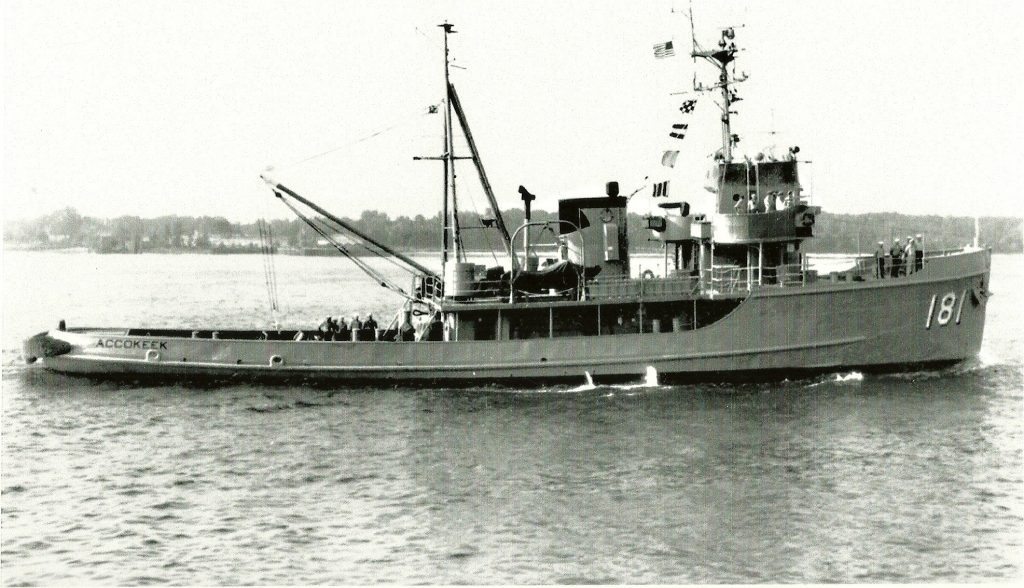
What Historical Features Can Still Be Identified on The USS Accokeek Wreck
- Intact Structure: The overall structure of the USS Accokeek remains relatively intact, allowing divers to explore the ship’s layout and design. This includes the hull, deck, and various compartments that are accessible for swim-throughs.
- Portholes: The wreck features several portholes that divers can look through, offering glimpses into the ship’s interior and adding to the historical ambiance of the dive.
- Swim-Through Areas: There are specific areas within the wreck that allow for swim-throughs, giving divers the opportunity to navigate through the ship’s passageways and rooms, much like the crew would have during its operational years.
- Resident Marine Life: While not a historical feature per se, the presence of a resident goliath grouper and other marine life adds to the wreck’s allure, showcasing how the ship has transformed into a thriving artificial reef over time.
- Historical Artifacts: Some parts of the ship, such as the deck machinery and other operational equipment, may still be visible. These artifacts provide insight into the ship’s function as a fleet tug and its role during World War II and post-war operations.
- Battle Scars: The ship’s history of surviving a typhoon and its service in towing damaged warships during the Okinawa campaign might be reflected in the wear and tear visible on the wreck. These marks serve as a testament to the ship’s resilience and storied past.
What Safety Measures Are in Place for Divers Visiting the USS Accokeek
- Depth awareness: The USS Accokeek rests at depths ranging from 74 feet at the bow to 100 feet at the sand. Divers must be aware of these depths and plan their dive accordingly to avoid decompression sickness.
- Advanced certification requirement: Given the depth, this is considered an advanced dive. It’s likely that dive operators require divers to have advanced open water certification or equivalent experience.
- Nitrox recommendation: Some sources suggest using nitrox to extend bottom time safely at these depths.
- Dive planning: Proper dive planning, including setting maximum depth and time limits, is crucial for safety.
- Buddy system: As with most wreck dives, a buddy system is likely enforced to ensure diver safety.
- Guided dives: Many dive operators probably offer guided dives to the wreck, providing an extra layer of safety and expertise.
- Swim-through precautions: Since the wreck offers swim-through areas, divers are likely briefed on proper techniques and potential hazards associated with penetrating the wreck.
- Marine life awareness: With the presence of large marine life like goliath groupers, divers are probably advised on proper behavior around these animals.
- Emergency procedures: Standard emergency procedures, including the use of dive computers, safety stops, and ascent rates, would be emphasized.
- Weather and current checks: Given its location in open water, dive operators likely monitor weather conditions and currents to ensure safe diving conditions.
Dive Shops That Prove Diving Trips to This Shipwreck
- Panama City Diving
- Rating: 4.9
- Reviews: 271
- Address: 106 Thomas Dr, Panama City Beach, FL 32408
- Website: Panama City Diving
- Diver’s Den
- Rating: 4.7
- Reviews: 147
- Address: 3120 Thomas Dr, Panama City Beach, FL 32408
- Website: Diver’s Den
- Panama City Dive Center
- Rating: 4.8
- Reviews: 127
- Address: 4823 Thomas Dr, Panama City, FL 32408
- Website: Panama City Dive Center
- Red Alert Diving
- Rating: 4.9
- Reviews: 93
- Address: 1619 Moylan Rd, Panama City Beach, FL 32407
- Website: Red Alert Diving
- Dive Locker
- Rating: 4.6
- Reviews: 85
- Address: 1010 Thomas Dr, Panama City Beach, FL 32408
- Website: Dive Locker

